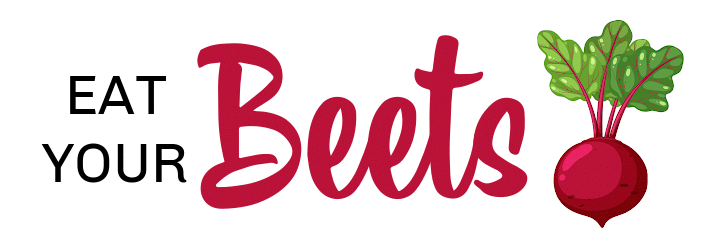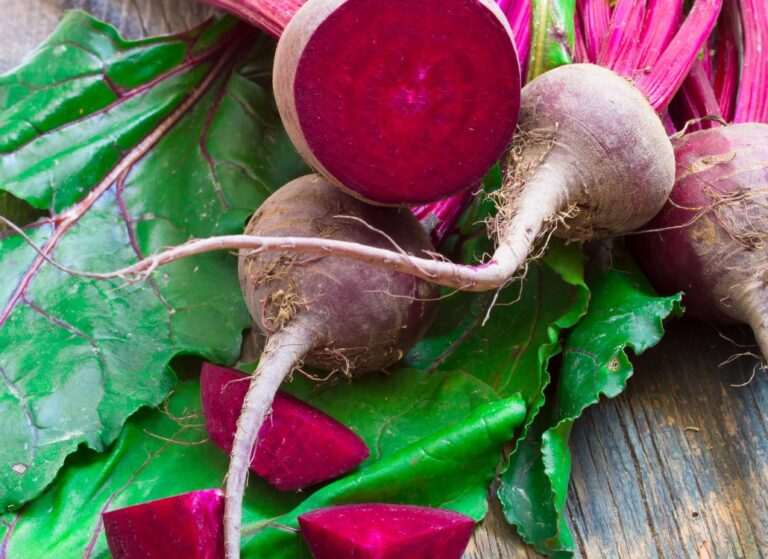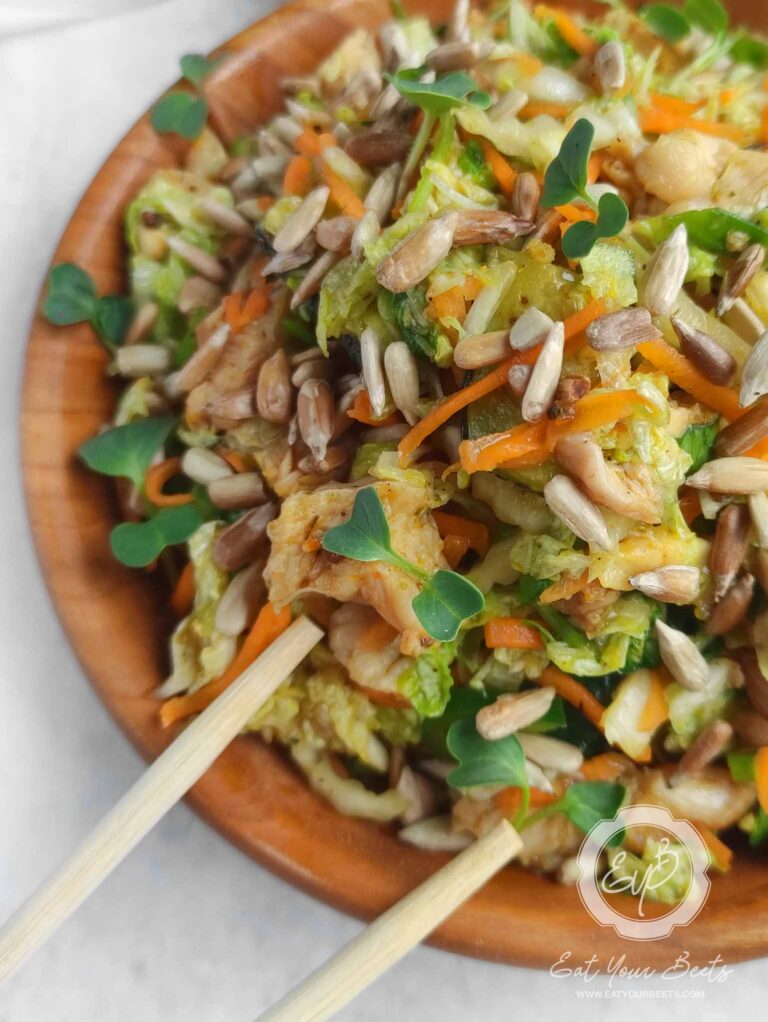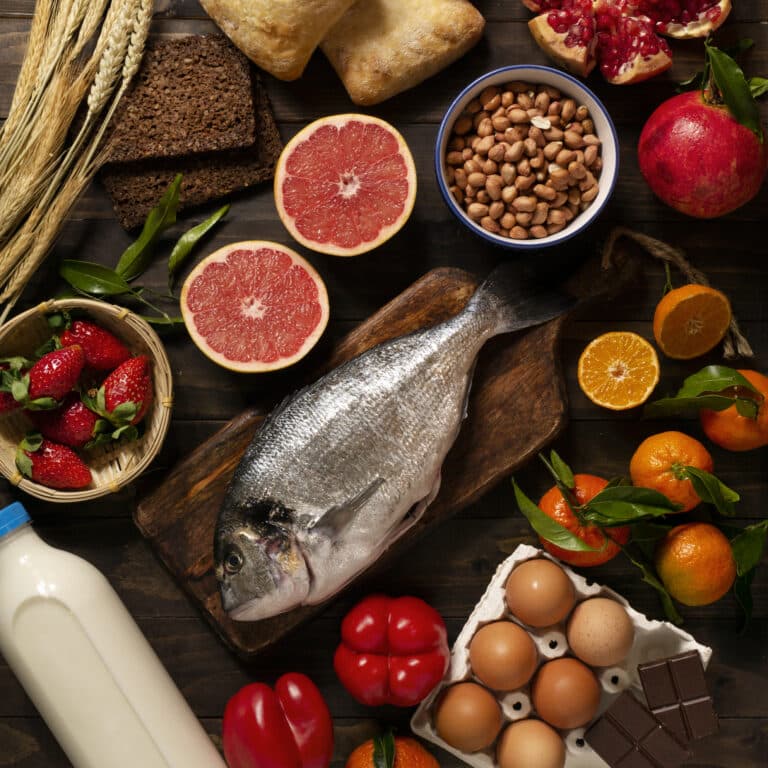What Does Persimmon Taste Like?
Have you ever wondered ‘What Does Persimmon taste Like?’ And what can you cook with them? Well, you’ve come to the right place. In this article, we will explore the taste of persimmons.

Contents
What Does Persimmon Taste Like?
Persimmon is a delicious and unique fruit that offers a delightful taste experience. There are two main types of persimmons: non-astringent and astringent. Each type has its distinct flavor profile, but both share some common characteristics.
Non-Astringent Persimmon
Sweet Flavor: Non-astringent persimmons are known for their sweet flavor. When ripe, they have a rich and mellow taste that can be compared to honey or apricot.
Jelly-like Consistency: As non-astringent persimmons ripen, their texture becomes soft and jelly-like, making them pleasant to eat.
Orange-Red or Deep Orange Color: A ripe, non-astringent persimmon will have an attractive orange-red or deep orange color, signaling it’s ready to be enjoyed.
No Bitter Taste: Unlike astringent persimmons, non-astringent varieties do not taste bitter, even slightly underripe.
Astringent Persimmon
Sweet Flavor When Ripe: A ripe astringent persimmon also has a sweet flavor but is more intense than the non-astringent variety. The sweetness is accompanied by a complex mix of tastes, including hints of cinnamon and nutmeg.
Taste Bitter When Unripe: Astringent persimmons taste bitter when they’re not fully ripe. This is because the high levels of tannins in the fruit will make your mouth pucker.
Ripe Persimmon Texture: A ripe astringent persimmon has a firm and slightly crisp texture, unlike the jelly-like consistency of non-astringent varieties.
Color Indication: Like non-astringent persimmons, astringent varieties will also have an orange-red or deep orange color when ripe.
Why Do Persimmons Have a Chalky Taste?
Persimmons, a delicious and unique fruit, can sometimes have a chalky taste due to their high levels of tannins, naturally occurring compounds in many plants. Tannins are responsible for the astringent taste that can leave your mouth puckered.
Astringent persimmons, such as the Hachiya variety, contain more tannins and must be fully ripe before consumption to minimize the chalky taste. As they ripen, the tannin content decreases, making the fruit sweeter and less astringent. On the other hand, non-astringent persimmons, like the Fuyu variety, have lower tannin levels and can be enjoyed while still firm without the undesirable chalky taste.
What Does Unripe Persimmon Taste Like?
Unripe persimmons taste can be quite an unpleasant surprise for those who have never tried them. However, when you bite into an unripe persimmon, you’ll quickly realize it’s not the delightful treat you expected.
Instead, your mouth will pucker from the intense astringency. This sensation can be off-putting, leaving a dry and chalky feeling in your mouth that may linger for some time.
Can You Eat Persimmon Raw?
Absolutely, you can eat persimmons raw! In fact, they are delicious and nutritious fruit to enjoy in their natural form. To savor the full flavor of a persimmon, it is essential to choose a suitable variety and ensure it is perfectly ripe.
Is It Ok to Eat Persimmon Skin?
Yes, it is perfectly fine to eat persimmon skin. In fact, the skin of persimmon is packed with nutrients and antioxidants that can benefit your health.
The skin contains fiber, which aids digestion and helps maintain a healthy gut. However, some people might find the texture of persimmon skin unappealing or difficult to chew.
Are Dried Persimmons as Good as Fresh?
Although different in texture and taste, dried persimmons can be just as enjoyable as their fresh counterparts. When eaten fresh, persimmons are juicy and sweet, with a distinct flavor many find delectable.
On the other hand, drying the fruit concentrates the natural sugars and creates a chewy, almost candy-like treat that retains the unique taste of the persimmon. While some may prefer the crispness and juiciness of fresh persimmons, others might find the concentrated sweetness of dried ones more to their liking.
Varieties of Persimmons
Here are some popular varieties of persimmon
Fuyu Persimmons (Asian Varieties)
Fuyu persimmons are the most common variety found in grocery stores. They are squat, tomato-like and non-astringent, meaning they can be eaten while still firm. Fuyu persimmons taste tart or bitter until fully ripened. Fuyu persimmon tastes sweet and mild with a crisp texture like an apple. Fuyu persimmons are best eaten raw,
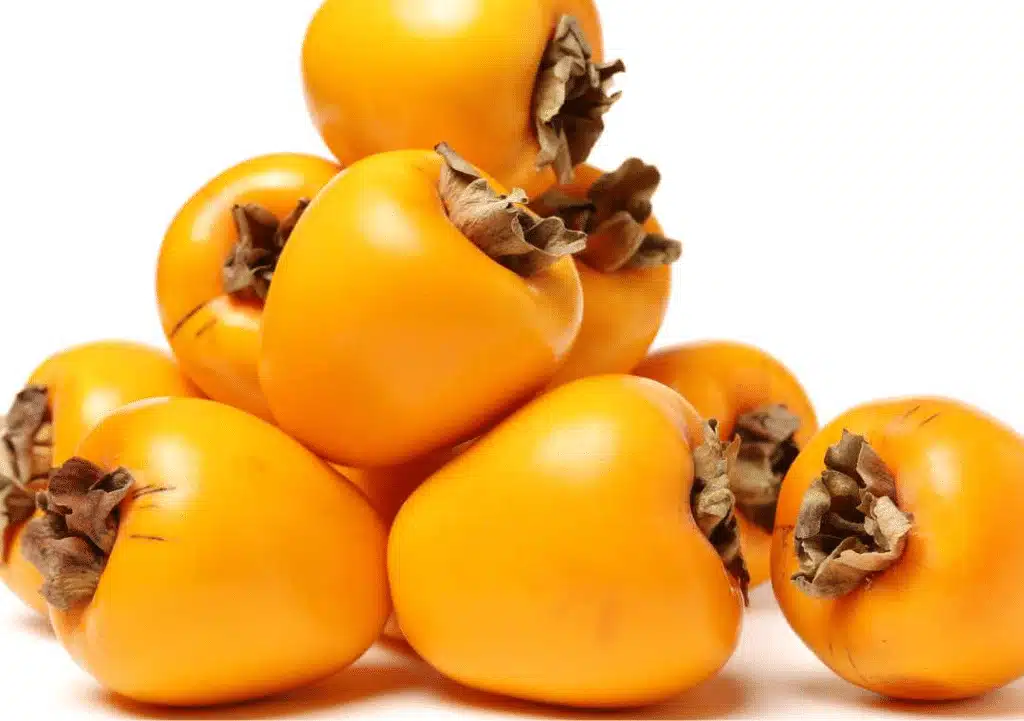
Hachiya Persimmons (Asian Varieties)
Hachiya persimmons are larger and more elongated than Fuyu persimmons. Hachiyas are acorn-shaped. They are astringent, meaning they must be fully ripe and soft before eating to avoid a bitter taste. When ripe, hachiya persimmon is intensely sweet, rich, and custard-like, making them ideal for baking and desserts.

Chocolate Persimmons
Also known as Tsurunoko or Maru persimmons, Chocolate persimmons are small, round, non-astringent fruits. They get their name from their dark brown flesh, which has a unique, chocolate-like flavor.

Diospyros Kaki ‘Shibugaki’
This astringent variety is native to Japan and is often used for traditional Japanese cuisine. The taste is distinct, bearing a mild bitterness, and it’s best consumed when wholly ripe and tender.

Diospyros Virginiana (American Persimmon)
Native to the eastern United States, the American persimmon is smaller than its Asian counterparts and has a distinct, sweet, spicy flavor. It is astringent and must be eaten when fully ripe.

Diospyros Lotus (Date Plum)
The Date Plum is native to southwest Asia and southeastern Europe. It is a small, astringent fruit with a sweet flavor reminiscent of fully ripe dates.

Diospyros Kaki ‘Jiro.’
Jiro persimmons are a non-astringent variety similar in appearance to Fuyu persimmons. They have a sweet, mild flavor and can be eaten when firm or soft.
Diospyros Kaki ‘Izu.’
Izu persimmons are another non-astringent variety known for their early ripening and small size. They have a sweet, delicate flavor and can be eaten when firm or soft.

What Is the Fruit Persimmon Similar To?
Persimmon, this delicious fruit, is often compared to a variety of other fruits due to its distinct flavor and texture. The taste of persimmons can be likened to a blend of ripe apple, apricots, plums, and dates, with a touch of honey-like sweetness. The texture resembles a ripe tomato while also possessing a mature avocado’s soft, creamy consistency. In appearance, persimmons resemble a bright orange tomato or a small pumpkin.
What Pairs Well With Persimmons?
Here are some excellent pairings for persimmons:
- Other fruit: Persimmons blend well with other fruits like apples, pears, and citrus fruits. Combining them in fruit salads or desserts adds an exciting burst of flavor.
- Persimmon jam: Persimmon jam is a delicious spread that pairs wonderfully with toast, pancakes, waffles, and even as a topping for yogurt or ice cream.
- Savory dishes: Integrating fresh or dried persimmons into savory meals such as meat or vegetable stews improves the overall taste. You can also use them as a glaze for roasted meats or in a sauce for pasta dishes.
- Bread: Persimmon bread is a popular treat that combines the sweet taste of persimmons with warm spices like cinnamon, nutmeg, and cloves. Enjoy it as a breakfast or dessert option.
- Custard: Persimmons and custard make an excellent pairing, as the creamy texture of the custard complements the sweet, slightly tangy taste of ripe persimmons. Try making a persimmon custard tart or pudding for a delightful dessert.
- Pudding: Pudding Overripe sweet persimmons are also perfect for flavorful pudding.
- Salads: Adding ripe persimmons to salads brings a pop of color and a unique flavor and texture. Combine them with mixed greens, nuts, cheese, and a light vinaigrette for a refreshing and satisfying meal.
Is Persimmon Healthy or Not?
Persimmon is a healthy fruit packed with abundant nutrients that can benefit your overall well-being. This sweet and flavorful fruit is a rich source of vitamins, particularly vitamins A and C, crucial in maintaining a strong immune system, healthy skin, and good vision.
Additionally, persimmons contain dietary fiber that supports digestion and helps maintain regular bowel movements. They are also known for their antioxidant properties, protecting your body from harmful free radicals and reducing the risk of chronic diseases.
Furthermore, essential minerals like potassium, manganese, and copper in persimmons contribute to the proper functioning of the heart and nervous system.
How to Store Persimmons?
Storing persimmons properly is essential to enjoy their unique flavor and texture. To store unripe persimmons, place them in a paper bag at room temperature, away from direct sunlight.
The confined space of the paper bag accelerates the ripening process by capturing ethylene gas, a naturally occurring hormone released by fruits that assists in their maturation. Check on your persimmons daily; when they become slightly soft to the touch, they are considered ripe.
At this stage, you can either consume the ripe persimmon immediately or transfer it to the refrigerator to prolong its freshness for up to a week. Remember to gently handle your persimmons, as they can bruise easily during ripening.
What Does Persimmon Taste Like? (Final Words)
Persimmon is a sweet and flavorful fruit that can be enjoyed in many ways. Its unique taste is a captivating combination of tartness and sweetness, with hints of citrus and honey.
Depending on its stage of maturity, persimmon can be used in various dishes to add a pleasant flavor. Not only does persimmon taste delightful, but it is also brimming with essential vitamins and minerals that contribute to your overall health and well-being. So, next time when you come across a persimmon tree or spot persimmons at your nearby farmers’ market, don’t hesitate to pick some up for snacking or to incorporate into one of these traditional persimmon dessert recipes.
